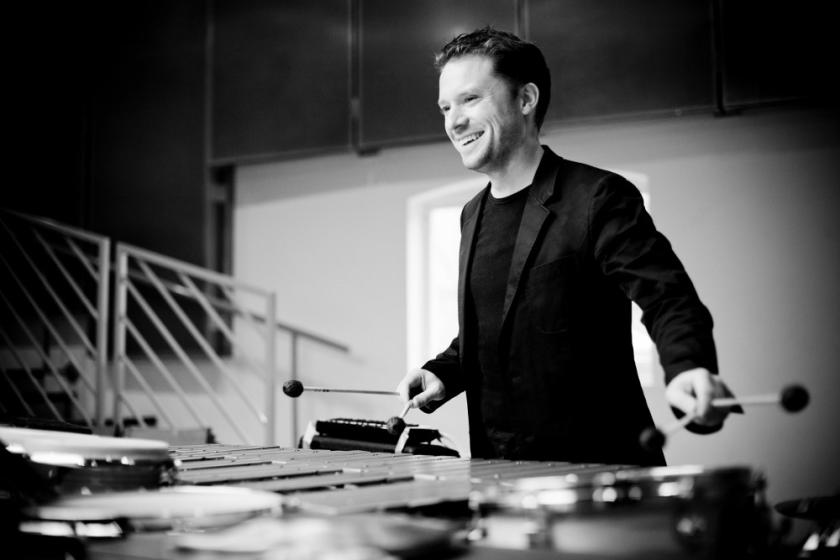Two percussionists, two pianists, Adams, Reich and Bartók: Colin Currie and friends’ bracing morning recital at the Edinburgh International Festival made quite a pleasing change from the more traditional string quartets and vocal recitals elsewhere in the Queen’s Hall chamber programme. And it attracted quite a different audience, too – including many clearly there for the broader Edinburgh festival, unsure of what exactly they’d let themselves in for.
Thankfully, they could hardly have asked for anything more lively, incisive and dramatic. And it started, ironically, with a performance of John Adams’ two-piano Hallelujah Junction – from two of those ‘friends’, Philip Moore and Simon Crawford-Phillips – that probably shouldn’t have worked at all. At times it felt like Brahms, at others like Chopin, but seldom like the kind of clipped, percussive, mechanical delivery that Adams’ piano writing can often receive. And as a result it was a quiet revelation: the duo shaped Adams’ repeating phrases beautifully, characterising his textures vividly and with a sure sense of the piece’s overall shape. They indulged in full-on Romantic richness in their washes of sound in the piece’s middle section, and the Nancarrow-like dissonance towards the end was brisk and clean.
Steve Reich’s Quartet for Two Vibraphones and Two Pianos, dedicated to Currie, got its world premiere in London last October and was here receiving its first performance north of the border. It’s quite an elusive piece in some ways, with its ever-shifting metres and slippery harmonies (especially in the darker second movement), and it only starts to feel like classic Reich when the music gets locked into a groove in the last movement. Nevertheless the foursome – Currie plus Sam Walton on vibraphones, with Moore and Crawford-Phillips on pianos – played it as if they knew it inside out. It was quite a heavy, deliberate account, but no less persuasive for that – vigorous, but hardly athletic.
Currie was on his own after the interval for Norwegian composer Rolf Wallin’s Márquez-inspired Realismos mágicos, and it’s hard to imagine a composer requesting and a performer conjuring a greater range of sounds from a solo marimba. It’s a witty piece in 11 movements – two of them over in a matter of seconds (Currie gave the audience an eyebrows-raised nod: “Yup, that really is it”), others mixing mallets and playing techniques to create a vast tapestry of sounds. And Currie responded with remarkably expressive, thoughtful playing, alive to both the work’s humour and to the introspective seriousness of its darker movements.
It was a shame, though, that the quartet’s closing piece – Bartók’s Sonata for Two Pianos and Percussion – felt rather on the muffled side. Moore and Crawford-Phillips approached the piano writing with the same soft-edged, Romantic expressivity that had worked so well in the Adams, but Bartók here really needs a brittle, percussive sound for the pianos to be heard; as a result, quite a bit of detail and energy was simply lost. The stage arrangement – following Bartók’s instructions, admittedly – and Queen’s Hall acoustics probably didn’t help. It all could have done with a bit more bite and aggression, even if it was impeccable in its ensemble and articulation. A performance to admire rather than love – and a slightly low-key ending to what had been a revelatory recital.














Add comment